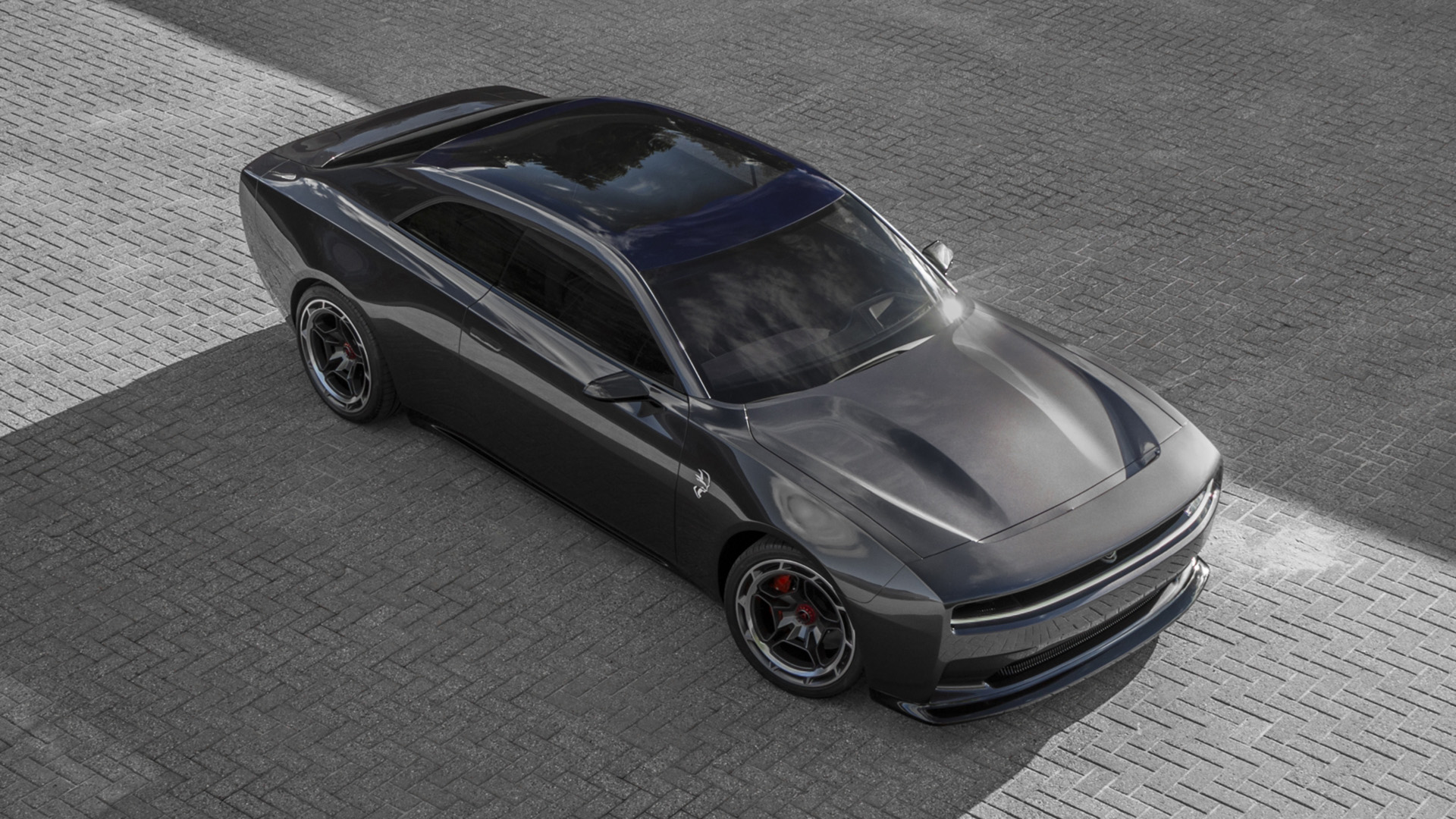

I don’t envy Dodge product planners and brand managers. Getting the “Brotherhood of Muscle”—as Dodge calls the buyers it’s courted with aggressive, spin-kick marketing campaigns—excited about electric muscle cars? That‘s like getting vegans excited about Beyond Asparagus. Think about it.
One way they’re solving that problem is by building a muscle EV that might have a stick shift. An EV with a stick shift, you say? An EV needs a stick shift like the average Dodge buyer needs a third full-sleeve tattoo. Yes, but considering Dodge is discontinuing its core products, V8 engines, it owes the brotherhood some sort of ritual offering.
To be sure, Dodge is operating within the letter of the law. Its donuts-and-burnouts ads never mention gasoline specifically. They could easily apply to the Dodge Charger Daytona SRT EV concept, a potential competitor to the Tesla Model S Plaid, which undoubtedly is an EV muscle car. But Dodge is still risking brand solidarity by cavorting with the enemy: electrons.

To keep the brotherhood on its side, Dodge is attacking the EV market with a range of weapons. For one, it’s using mimicry. The Daytona SRT concept has, according to a press release, a “multi speed” transmission with an “electromechanical shifting experience” that, it would seem, apes an ICE car’s manual gearbox. Dodge calls the system eRupt. (Branding every part of the electric car powertrain like it’s 1964 is another way to get muscle-car fans on board. It also named its 800V electrical propulsion system “Banshee.”)
Dodge’s CEO, Tim Kuniskis, told the crowd gathered at one of the company’s Speed Week events earlier this week that the motivation behind the multi-speed is to retain a familiar feel. The EV, in effect, has to offer an experience similar to a Dodge muscle car that “kicks you in the backside at every shift point,” he said.
As most engineers know, electric cars don’t need gear ratios to keep motors in their most effective rpm range. Electric motors produce maximum torque as soon as they’re hit with current, and produce relatively consistent torque throughout their rotation speed. Control units and software pair the torque delivery to the available traction.




The trouble with electric motors is that, as their speed increases, they create an opposing force called back-EMF (electromotive force), which counters the supply voltage. Eventually the forces equalize and torque diminishes. That’s why some EVs have lower trap speeds than gasoline-powered cars. It’s reasonable to think Dodge might use gears to keep the Daytona’s motor setup pulling for longer in order to tease out proper quarter-mile velocities and win over the drag guys.
Dodge isn’t providing any technical details about the eRupt system yet, or whether it will be used to boost zero-to-60 times, range, or trap speeds, or if it will be just a manual transmission simulator for the fun of it. We’ll have to wait and see.
As far as positioning goes, being the first to build an EV that simulates a manual transmission gives the Dodge faithful a path to transition from internal combustion without forcing them to quit slamming gears cold turkey. It also allows a degree of differentiation, especially as SUVs continue to push cars out of the picture, and competition in the EV segment heats up.

The big question for Dodge is, will its band of speed-obsessed brothers accept the EV-as-muscle-car model, with all the artifice that implies. For instance, engineers also spun up a bizarre electronic pipe organ-type mechanism that sends a 126dB—around the same as the current Hellcat’s roar—artificial rev sound out of the Daytona EV’s ersatz exhaust pipe. You might say that’s a bit performative, but if it catches on, it will have validated another one of Dodge’s assumptions: that sound is vital to high-performance motoring, whether internal combustion or electric.
The risk is that the brotherhood will see all of these gimmicks as a sort of pose, and reject the premise of electric muscle outright. My guess is that, like many cultural hot buttons, this one will fall along age lines, with greater acceptance from younger buyers.
Either way, Dodge isn’t giving up on its familiar outlaw-spirit messaging. At yesterday’s event, Kuniskis called the Daytona “the EV they don’t want you to have.” People cheered.
Got a tip? Email tips@thedrive.com